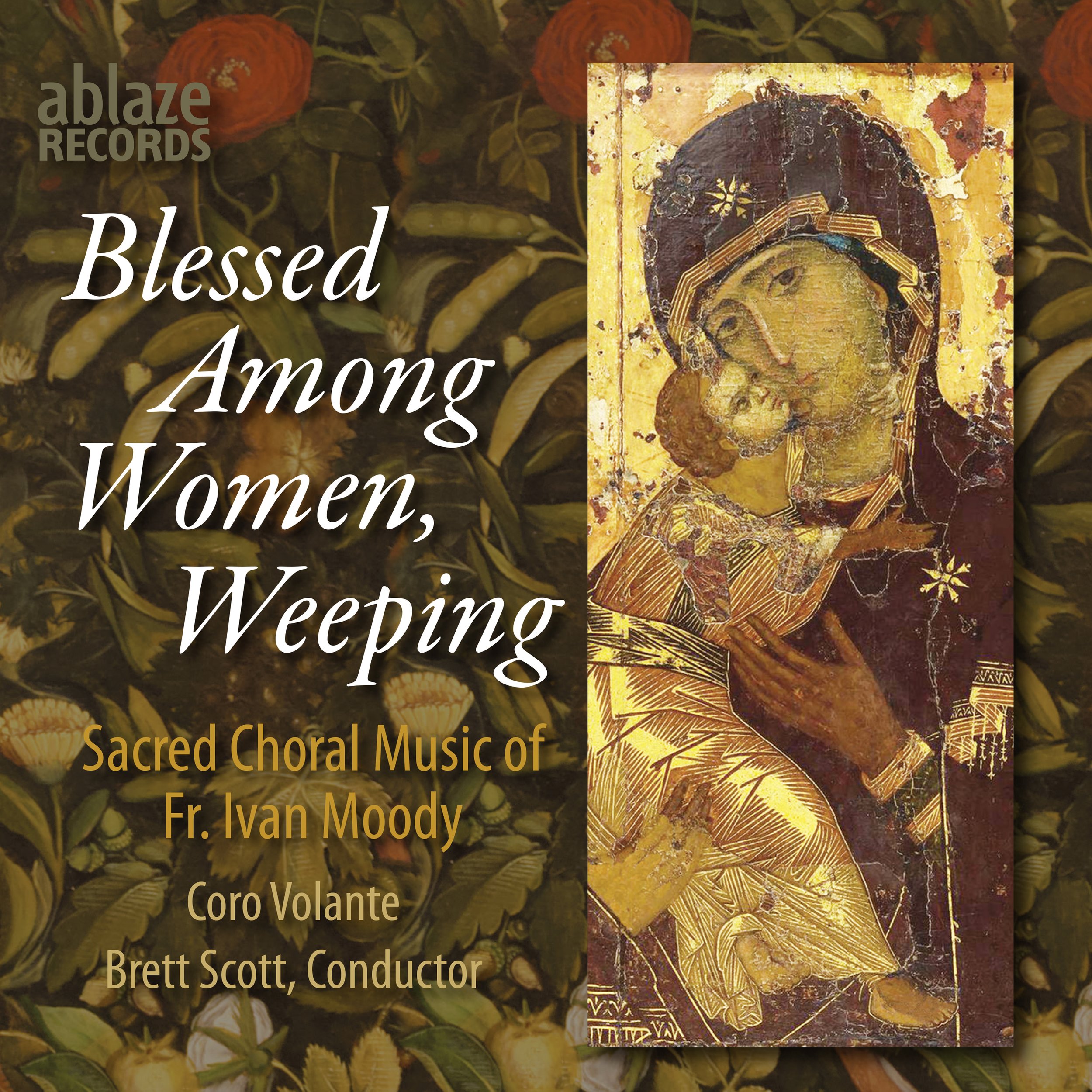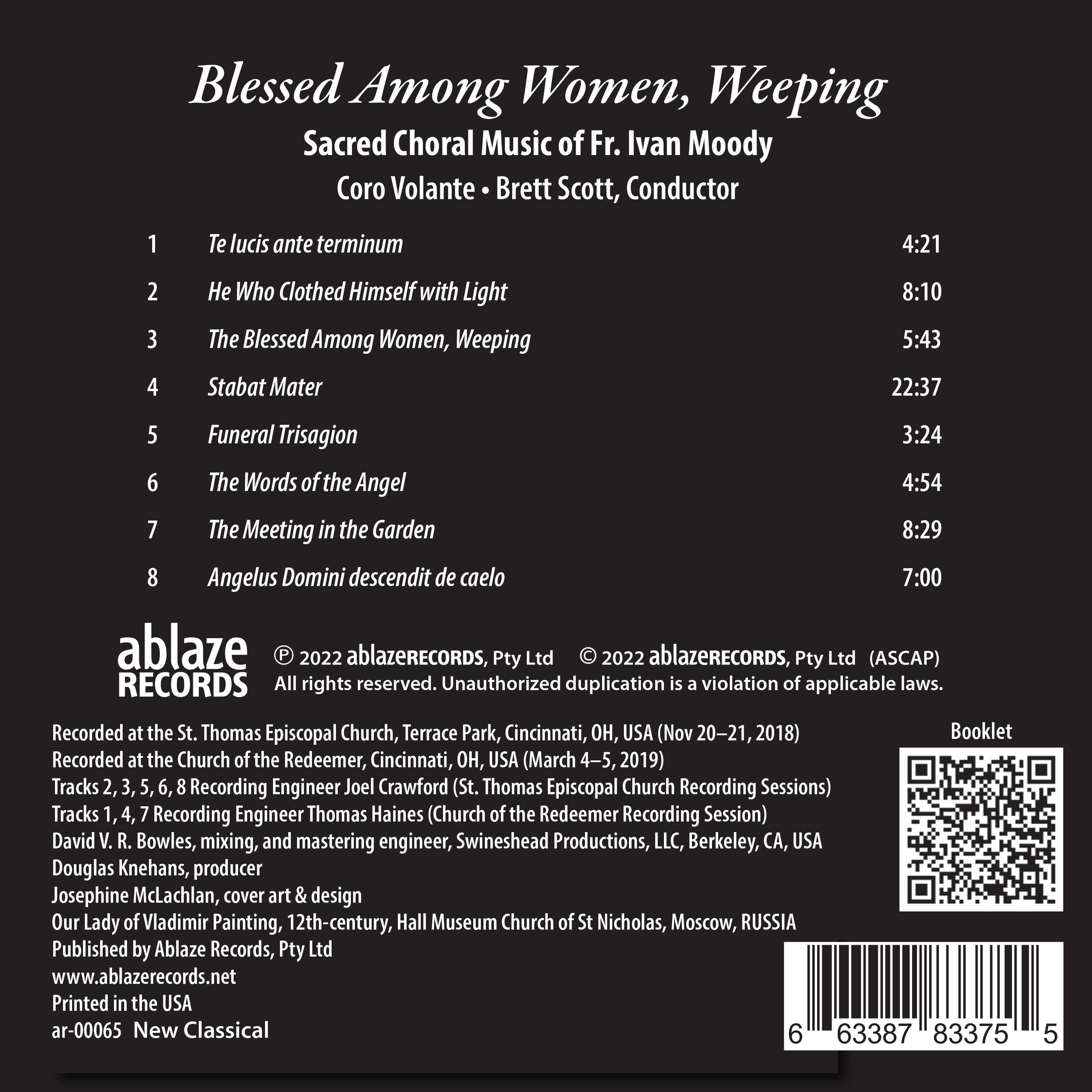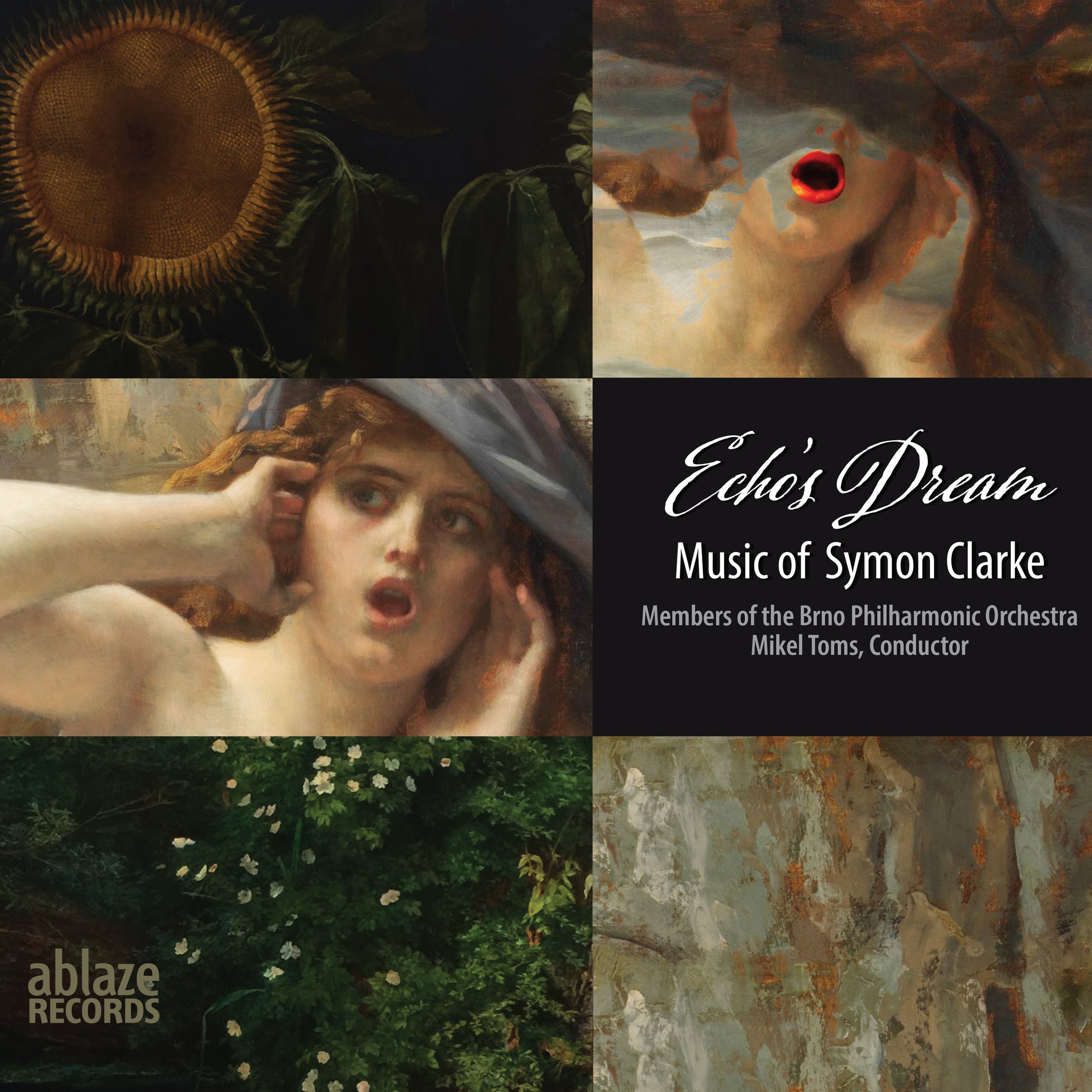ar—00053 Knehans Smaldone DOUBLE PORTRAIT


ar—00053 Knehans Smaldone DOUBLE PORTRAIT
Two ‘mini-portraits’ of composers Douglas Knehans and Edward Smaldone featuring the virtuoso young ensemble ALL OF THE ABOVE in performances of a really wide ranging set of works demonstrating the artistic power and sweep of these two American composers.
FANFARE MAGAZINE REVIEW
I’ve never before encountered a release that paired two composers who are longtime friends, sometime colleagues, and admirers of each other’s works. But in 2017, when Douglas Knehans invited Edward Smaldone to be a visiting professor at the University of Cincinnati’s prestigious College-Conservatory, the ground for this release, titled Double Portrait, was established. We get four chamber works from each composer, and to add interest, Knehans wrote the program notes for Smaldone’s pieces and vice versa. Composers have often admired one another’s music, of course, and I wondered if this example led to a crossing of paths stylistically.
The word “like-minded” comes up in the program notes, and the ear does pick up similarities. There’s a liking for free tonality that tilts more toward diatonic than dissonant. Propulsive rhythms appear, along with a kind of continuous variation that often plays upon short motifs or note groups. Melody in any extended form is less prevalent than themes or sequences. When Knehans comments that Smaldone’s music has “immediate appeal and visceral claim,” he’s pointing toward the kind of impact that sharp contrasts, accents, and rhythms have. The same applies just as strongly to his own music.
I realize that I’m speaking in generalities. The essential resemblance here is actually a non-resemblance. Knehans and Smaldone write independently of conventional forms (sonata, theme and variation, fugue, tone rows, chromaticism), which therefore requires them to invent new forms for each piece. This they do quite ingeniously, but there’s a second requirement linked to the first. A new form must show the listener how to grasp it. A new-music audience has the disadvantage of not knowing a piece’s internal scheme the way its creator does. The piece has to say “Listen to this” with something appealing to offer.
Let me pick four works that do just that. The two most exotic ones belong to Knehans, thanks to the fixed electronic track that blends with a traditional-instrument sextet in Bang and the use of a time-honored Chinese wind instrument, the sheng, in Falling Air. Bang presents a special technical challenge. Its dense texture is often fast-moving, on the verge of moto perpetuo, and synchronizing with a fixed tape seems daunting. But not a 16th note is out of place, which says much for both the performers and the skill of conductor William R. Langley, who achieves a reading just as precise and expressive in Falling Air.
Bang feels like one of Hindemith’s Kammermusik pieces in modern dress, with the squeaks, pings, and swoops of electronica added as spice—when the effect is like 50s sci-fi movies, it brings a smile. Falling Air is quite different thanks to soloist HU Jianbing, a member of Yo-Yo Ma’s Silk Road Ensemble as well as an acknowledged sheng virtuoso. It’s worthwhile to google a video of this remarkable-looking instrument. It resembles a bundle of miniature organ pipes with a tube at the bottom that the player blows into and out of, like a harmonica. The sound that comes out has the chuffing, reedy quality of a harmonica. Rather than imitating Chinese folk melodies or using pentatonic scales, Knehans creates a unique sound world that builds from short, evenly spaced mottos to a roiling cacophony.
The effect is at once quite strange and quite compelling. As the most electrifying piece on the program, Falling Air meets the requirement of sounding absolutely original and drawing in the listener with its immediate appeal. Smaldone’s style isn’t nearly as concerned with avoiding familiar harmonies, often taken from jazz, and reshaping traditional forms—the Scherzo and Nocturne, for example. In a solo piano work like Three Scenes from “the Heartland”—the reference is to poetry by Amy Clampitt—the inward mood at the outset reminded me of Bill Evans at his most meditative. But a strong neo-Romantic streak emerges in the third movement, “Nocturne,” where rapid arpeggiated chords shimmer under a rhapsodic melody in the manner of Fauré. Here the jazz allusions are so prominent in the first movement, and the Scherzo feels so much like a scherzo, that a listener feels the appeal of a secure traditional idiom in a fresh new guise.
A trio for flute, cello, and piano titled Rituals: Sacred and Profane, draws on the visceral appeal mentioned above. It uses propulsive, fast-moving activity in an unusually compelling way because the flute and cello are intrinsically so gentle. You feel the pull of a tender sonority against the percussive quality of the piano. Smaldone has a gift for connecting one phrase with another, even one note with another, so that you get wrapped up in the music. Sometimes the connections are teasing and ambiguous, which is mostly true of Three Scenes. At other times, as in the trio, the overall effect is sweeping and breathless.
The feeling of one long exhale (a phrase borrowed from the program notes) applies to both works, different as their idioms are. This testifies to how well Smaldone makes the listener’s ear understand the music as it is happening. I’ll admit that the trio didn’t remind me of rituals, although repetitive motion could be called ritualized. I was mainly struck by a sense of bodies in motion, swaying and dancing with an inner rhapsodic drive. Of everything here, the two works that seem ecstatic are Smaldone’s Rituals and Knehans’s Bang—like-mindedness, indeed.
Special commendation goes to the young contemporary-music ensemble All of the Above, which performs all the works here, either as the full complement (violin, cello, clarinet, flue, and piano—the same instrumentation as Schoenberg’s Pierrot lunaire—plus percussion) or in smaller divisions of one, two, or three. Each performance is expert and shows dedication on the part of the musicians, who are unfazed by the technical challenges they face or by some dramatically diverse idioms. In addition the recorded sound is completely satisfying and realistic. Warmly recommended.
Huntley Dent
This article originally appeared in Issue 44:3 (Jan/Feb 2021) of Fanfare Magazine.








